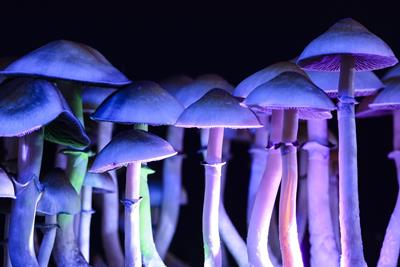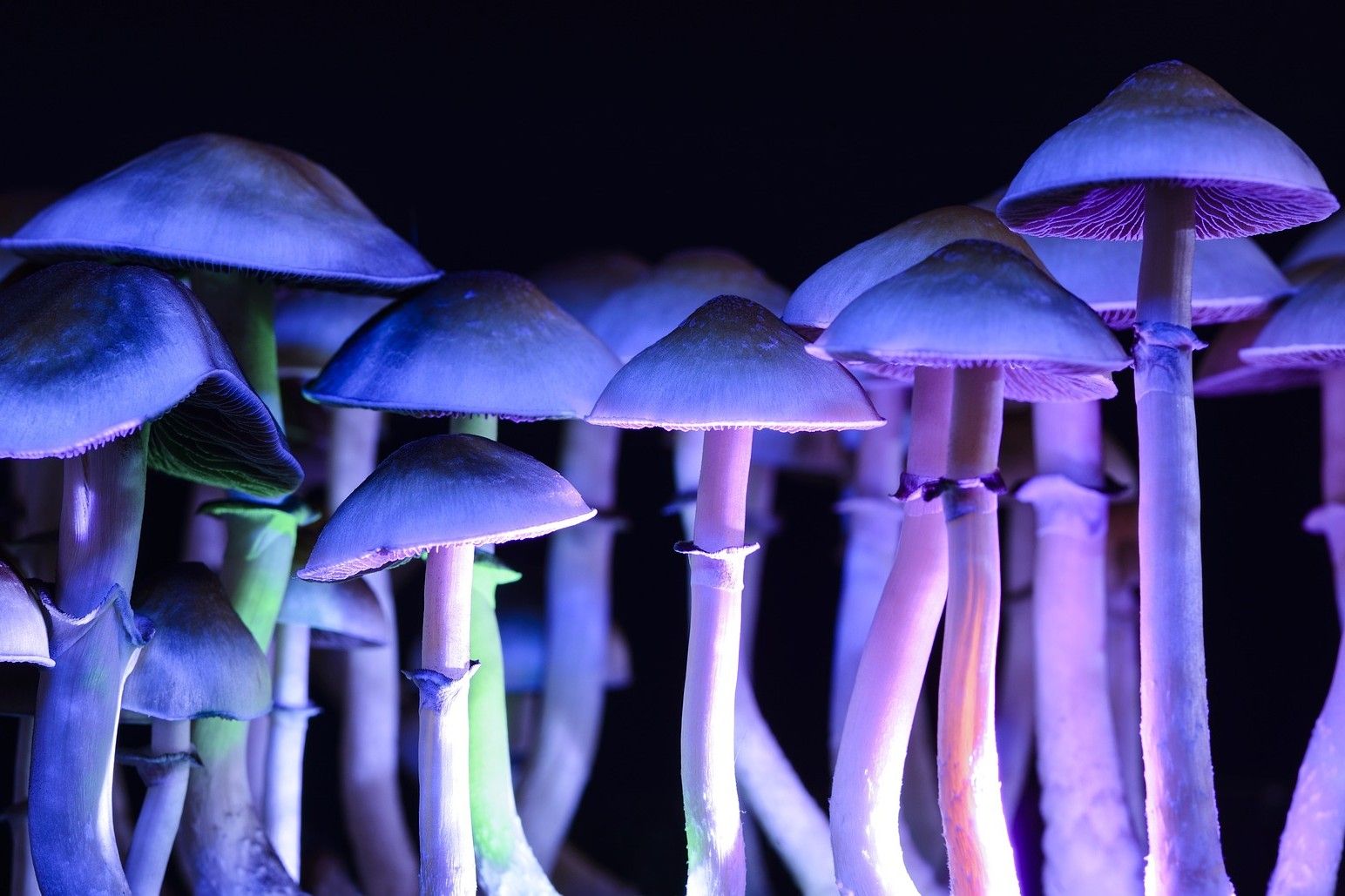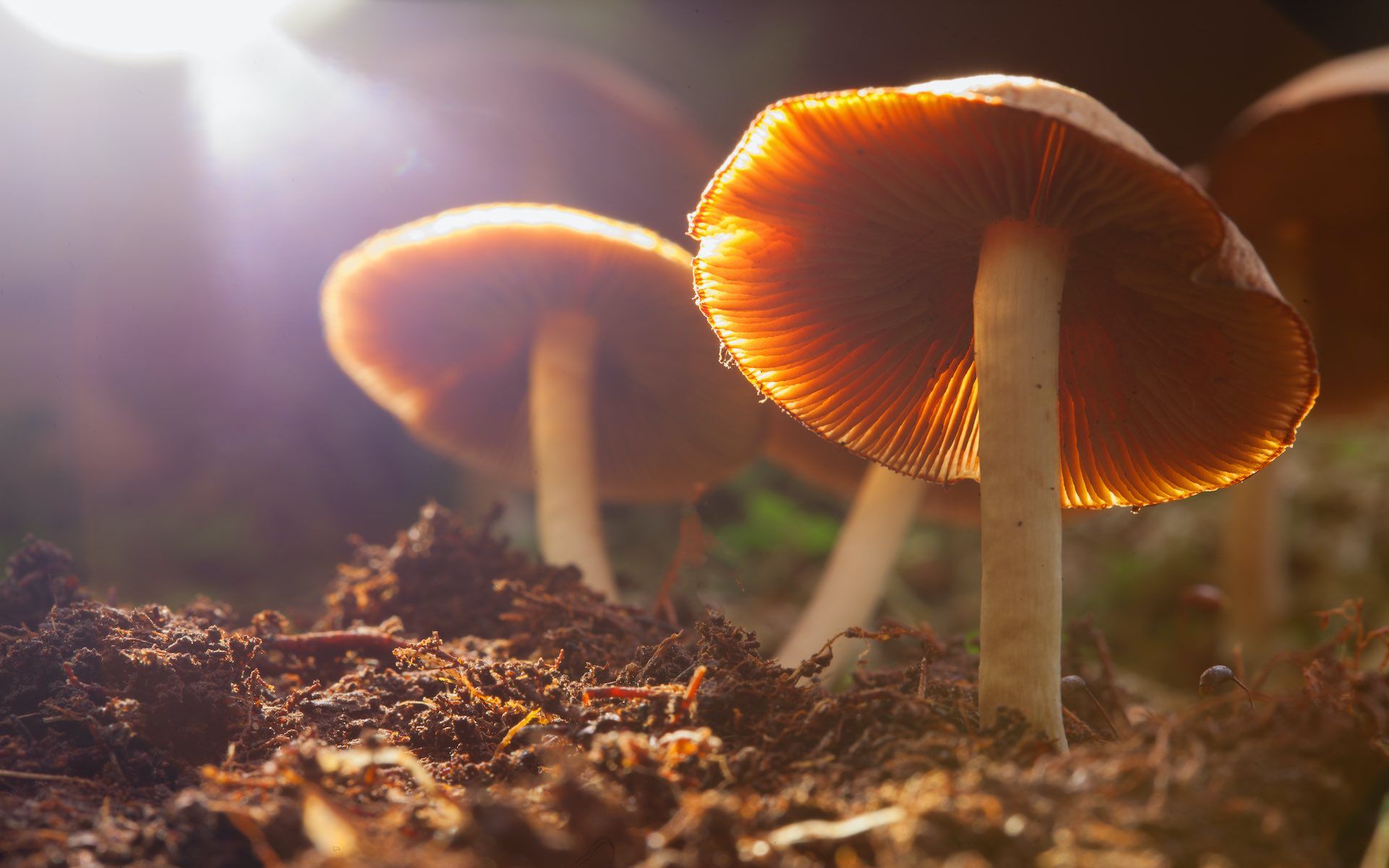|
Sponsored by |
|---|
|
|
|
-
Need help navigating the forum? Find out how to use our features here.
-
Did you know we have lots of smilies for you to use?
You are using an out of date browser. It may not display this or other websites correctly.
You should upgrade or use an alternative browser.
You should upgrade or use an alternative browser.
Lunacy I didn't know that!
- Thread starter CarolKing
- Start date
bulllee
Well-Known Member
Will Psychedelic Reform Catch Up to Cannabis?
Wednesday July 22, 2020
By Andrew Ward
 420 Culture
420 Culture
While preparing for a recent article, one of my interview subjects hypothesized that psychedelics reform could catch up or lap the cannabis efforts. The idea may seem out there to some, but recent events in both spaces indicate that the belief, at the very least, is worth consideration.
So far, psychedelics reform has reached just a few cities. However, the groundswell of support has the movement reaching hundreds of other American municipalities as of late. With end goals varying from cannabis, many believe the ideal conclusion could be reached sooner than marijuana’s.
At the same time, cannabis continues to advance its cause, with more newcomers possibly joining the ranks come Election Day 2020. That said, the federal government remains a barrier.
We live in an era where we could see both cannabis and psychedelics reform. Which, if either, could come first on the federal level is anyone’s guess. Here are some of the latest on both fronts.
Ad
The State of American Marijuana Reform
2020 was slated by many in the space as a year for significant legislative progress. Several states appeared poised to get ballot initiatives on the 2020 ballot. Meanwhile, states like New York thought this would be the year laws would pass through the state Congress.
The COVID-19 pandemic would upend many of these efforts. In-person ballot initiatives were halted due to social distancing, causing some states to refocus their legalization efforts for 2022. In New York, lawmakers who had once hoped to pass legislation, including Governor Andrew Cuomo, conceded that the coronavirus would divert attention and funds from such efforts.

Coronavirus has led to many businesses closing down, a steep drop in the economy, and has even caused legislation to come to a halt. photo credit
Despite that, numerous NY politicians have renewed a call to legalize. Three state Senators have even proposed cannabis legalization to specifically address the tax losses that COVID has caused. The Governor would pivot his sentiment in the weeks ahead as well. Other states, including Montana, have since advanced their legalization efforts despite the virus.
However, federal opposition remains strong at the top. Despite a growing number of lawmakers on Capitol Hill advocating for reform in various bills, including the MORE Act, SAFE Banking and various other measures, Attorney General Bill Barr has been accused of disliking the cannabis industry and unnecessarily targeting the market through what a whistleblower alleged to be unnecessary antitrust investigations.
Psychedelics Reform Picking Up Momentum
The recent wave of psychedelics reform can be traced to PotGuide's hometown of Denver. The bastion for drug reform kicked off the movement in May 2019 when the city decriminalized psilocybin. Oakland followed suit the month after, decriminalizing psilocybin and other hallucinogenic substances.
Cities like Portland, Chicago, Berkeley, and Dallas would soon have their own discussions about the substances. The movement would continue gaining momentum over the next year or so.

More and more places states are proposing bills to decriminalize psychedelics. photo credit
Vermont started the new year off with a bill aimed at decriminalizing psychedelics as well as kratom. Santa Cruz, California, went further by approving its decriminalization bill just a few days into 2020.
More recent examples include New York State, where Assemblywoman Linda Rosenthal sponsored a proposal to decriminalize mushrooms. Around the same time, it was revealed in a poll of Washington, D.C. voters would support decriminalization if the question made it onto the 2020 ballot in November.
Ad
Will Psychedelics Reform Catch Up to Cannabis?
The wave of reform in both spaces may lead some to believe that the movements are on similar legalization paths. Others, like Co-founder and Director of Unlimited Sciences, Del Jolly, see psychedelics reform rolling out a bit differently while having the same three tracks to access: decriminalization, legalization, and medicalization.
Jolly, who was part of the Decriminalize Denver reform team, told PotGuide that many cannabis entrepreneurs perceive the psychedelic space wrong. “It has become very clear to me that there is a deep misconception amongst cannabis entrepreneurs trying to position themselves towards profit and their lack of understanding of psilocybin in particular,” Jolly explained.
“This will not unroll like cannabis, nor should it.”
Others like Doug Chloupek, CEO of cannabis brand Juva, believe it is presumptuous to think psychedelics will catch up to cannabis reform. While noting it took until 2018 to see cannabis legalization in California, Chloupek said, "That said the world is very different, as is public perception with the utilization of plant-based medicines."
Chloupek discussed how a lack of lab studies hampers psychedelics reform. ”[While] certain psychedelics have shown tremendous medicinal effects, the proper science is still desperately needed to show clinical efficacy.” The CEO added, “Organizations like MAPS have made great inroads, but proper IRB approved research registries are needed to really help move the needle on a federal level.”
Things to Come for Psychedelics in America
Additional lab results could come soon enough. Johns Hopkins University's launched a first-of-its-kind research facility in late 2019, aiming to reinvigorate psychedelics studies. Meanwhile, this past July, a team of Canadian therapists at Therapsil asked federal lawmakers to be allowed to dose themselves to understand proper dosing for end of life patients who are petitioning for legal psychedelics access.
The future of both psychedelics and cannabis reform remains uncertain. Progress indicates that reform efforts are continually gaining traction. However, with federal reluctance and a lack of lab studies, both movements face a tall task in winning over federal lawmakers.
What are your thoughts on the status of psychedelics? Should reform be more similar to that of recreational cannabis? Share your thoughts in the comments below.
Photo Credit: TherapeuticShroom (license)
View Comments

 potguide.com
potguide.com
Wednesday July 22, 2020
By Andrew Ward

While preparing for a recent article, one of my interview subjects hypothesized that psychedelics reform could catch up or lap the cannabis efforts. The idea may seem out there to some, but recent events in both spaces indicate that the belief, at the very least, is worth consideration.
So far, psychedelics reform has reached just a few cities. However, the groundswell of support has the movement reaching hundreds of other American municipalities as of late. With end goals varying from cannabis, many believe the ideal conclusion could be reached sooner than marijuana’s.
At the same time, cannabis continues to advance its cause, with more newcomers possibly joining the ranks come Election Day 2020. That said, the federal government remains a barrier.
We live in an era where we could see both cannabis and psychedelics reform. Which, if either, could come first on the federal level is anyone’s guess. Here are some of the latest on both fronts.
Ad
The State of American Marijuana Reform
2020 was slated by many in the space as a year for significant legislative progress. Several states appeared poised to get ballot initiatives on the 2020 ballot. Meanwhile, states like New York thought this would be the year laws would pass through the state Congress.
The COVID-19 pandemic would upend many of these efforts. In-person ballot initiatives were halted due to social distancing, causing some states to refocus their legalization efforts for 2022. In New York, lawmakers who had once hoped to pass legislation, including Governor Andrew Cuomo, conceded that the coronavirus would divert attention and funds from such efforts.

Coronavirus has led to many businesses closing down, a steep drop in the economy, and has even caused legislation to come to a halt. photo credit
Despite that, numerous NY politicians have renewed a call to legalize. Three state Senators have even proposed cannabis legalization to specifically address the tax losses that COVID has caused. The Governor would pivot his sentiment in the weeks ahead as well. Other states, including Montana, have since advanced their legalization efforts despite the virus.
However, federal opposition remains strong at the top. Despite a growing number of lawmakers on Capitol Hill advocating for reform in various bills, including the MORE Act, SAFE Banking and various other measures, Attorney General Bill Barr has been accused of disliking the cannabis industry and unnecessarily targeting the market through what a whistleblower alleged to be unnecessary antitrust investigations.
Psychedelics Reform Picking Up Momentum
The recent wave of psychedelics reform can be traced to PotGuide's hometown of Denver. The bastion for drug reform kicked off the movement in May 2019 when the city decriminalized psilocybin. Oakland followed suit the month after, decriminalizing psilocybin and other hallucinogenic substances.
Cities like Portland, Chicago, Berkeley, and Dallas would soon have their own discussions about the substances. The movement would continue gaining momentum over the next year or so.

More and more places states are proposing bills to decriminalize psychedelics. photo credit
Vermont started the new year off with a bill aimed at decriminalizing psychedelics as well as kratom. Santa Cruz, California, went further by approving its decriminalization bill just a few days into 2020.
More recent examples include New York State, where Assemblywoman Linda Rosenthal sponsored a proposal to decriminalize mushrooms. Around the same time, it was revealed in a poll of Washington, D.C. voters would support decriminalization if the question made it onto the 2020 ballot in November.
Ad
Will Psychedelics Reform Catch Up to Cannabis?
The wave of reform in both spaces may lead some to believe that the movements are on similar legalization paths. Others, like Co-founder and Director of Unlimited Sciences, Del Jolly, see psychedelics reform rolling out a bit differently while having the same three tracks to access: decriminalization, legalization, and medicalization.
Jolly, who was part of the Decriminalize Denver reform team, told PotGuide that many cannabis entrepreneurs perceive the psychedelic space wrong. “It has become very clear to me that there is a deep misconception amongst cannabis entrepreneurs trying to position themselves towards profit and their lack of understanding of psilocybin in particular,” Jolly explained.
“This will not unroll like cannabis, nor should it.”
Others like Doug Chloupek, CEO of cannabis brand Juva, believe it is presumptuous to think psychedelics will catch up to cannabis reform. While noting it took until 2018 to see cannabis legalization in California, Chloupek said, "That said the world is very different, as is public perception with the utilization of plant-based medicines."
Chloupek discussed how a lack of lab studies hampers psychedelics reform. ”[While] certain psychedelics have shown tremendous medicinal effects, the proper science is still desperately needed to show clinical efficacy.” The CEO added, “Organizations like MAPS have made great inroads, but proper IRB approved research registries are needed to really help move the needle on a federal level.”
Things to Come for Psychedelics in America
Additional lab results could come soon enough. Johns Hopkins University's launched a first-of-its-kind research facility in late 2019, aiming to reinvigorate psychedelics studies. Meanwhile, this past July, a team of Canadian therapists at Therapsil asked federal lawmakers to be allowed to dose themselves to understand proper dosing for end of life patients who are petitioning for legal psychedelics access.
The future of both psychedelics and cannabis reform remains uncertain. Progress indicates that reform efforts are continually gaining traction. However, with federal reluctance and a lack of lab studies, both movements face a tall task in winning over federal lawmakers.
What are your thoughts on the status of psychedelics? Should reform be more similar to that of recreational cannabis? Share your thoughts in the comments below.
Photo Credit: TherapeuticShroom (license)
View Comments

Will Psychedelic Reform Catch Up to Cannabis?
So far, psychedelics reform has reached just a few cities, however, the movement is continuing to grow. We live in an era where we could see both cannabis and psychedelics reform. Which, if either, could come first on the federal level is anyone’s guess. Here are some of the latest on both fronts.
bulllee
Well-Known Member
New company to put psilocybin on dissolvable sublingual strips to help treat depression
Celia GormanAugust 10, 2020
There is a magical moment in the pharmaceutical industry when a government approves a new treatment. For companies researching psilocybin, the psychoactive component in psychedelic mushrooms, that moment is now.
Late last year, the United States Food and Drug Administration (FDA) designated psilocybin as a “Breakthrough Therapy,” a label that fast tracks clinical trials. The move only comes when there is significant evidence that a new treatment might prove far more effective than current treatments.
In the case of psilocybin, it’s drug-assisted therapy for Major Depressive Disorder (MDD). So far, in clinical trials, the results of psilocybin-assisted therapy have outstripped those of early trials of antidepressants.
Like breath strips, but with psilocybin
Cybin Corporation, one of many companies pursing psilocybin treatments, is throwing another factor into its clinical trials: drug delivery method. Existing research has focused on oral treatments, or pills, but Cybin is conducting trials with dissolvable films remarkably similar to minty breath strips. Cybin has partnered with pharmaceutical manufacturer IntelGenx to make the films, which may end up with a cherry flavor.
IntelGenx’s sublingual films can deliver a pharmaceutical ingredient directly into the bloodstream when placed under the tongue, as opposed to the long path through the gastrointestinal system and the liver when a pill is swallowed. With other pharmaceuticals, medication films have been shown to kick in faster and pack a harder punch with a lower dose.
In theory, the same will hold for psilocybin, and Cybin hopes to deliver 25 milligram (mg) results with a much smaller amount.
A 25mg psilocybin pill has become the unofficial standard for a therapeutic dose in clinical research and has been shown to be effective in treating Major Depressive Disorder (MDD) in trials.
Cybin is embarking on a clinical trial to determine how many milligrams on a dissolvable film will match a 25-milligram therapeutic dose: one, three, five, or seven milligrams.
“I suspect that the three-milligram dose will be the efficacious dose,” said Dr. Jukka Karjalainen, Cybin’s Chief Medical Officer. But rigorous testing and research is still necessary.
Sublingual vs. ingesting
Pharmaceutical trials follow a marked path. Safety first. Safety and effectiveness second. Safety and effectiveness for everyone third. These are the most basic tenants of the three phases of human clinical trials.
Cybin’s Phase 2A clinical trials will test the different dosages on the films. Its Phase 2B trial will test the selected film dose against a placebo film on 120 participants who have Major Depressive Disorder, according to the company. Both trials will take place in Jamaica, where psilocybin is legal and Cybin is able to get approval for both studies.
To be clear, this is not microdosing, which is a small amount that is swallowed. Those three milligrams of psilocybin will go directly into the bloodstream from under the tongue and on to the brain. That’s why films can carry a significantly lower dose.
A traditional pill is ingested and travels through the gastrointestinal system and is processed by the liver, explained Dr. Karjalainen. It’s difficult to tell exactly how much of the dose is actually processed, but 50-60% of that 25mg dose could be lost, he said. The percentage that’s absorbed is the bioavailable dose.
“With the oral film dosing, bioavailability goes to 100%,” said Dr. Karjalainen. “The dose that is being given is the dose available to the clinical effect.”
And the dosing of these films is extremely precise.
How are the strips made?
Cybin and their manufacturer IntelGenx purchase biosynthetic psilocybin from a company in the United Kingdom. Psilocybin research is legal in the US and Canada, as long as you get government approval, but producing psilocybin isn’t. Like pharmaceutical cannabinoids, it is produced in labs using different types of viruses and fungi such as yeast.
IntelGenx mixes the imported psilocybin into a solution that then, in many calculated and machined steps, is applied to a liner, explained Horst Zerbe, CEO of IntelGenx. That liner is then carefully cut into narrow rolls, transferred to packing material, further diced into the right size, and sealed into individual pouches—at a speed of 900 pouches per minute.
The time it takes for the psilocybin in the films to kick in isn’t known yet, but IntelGenx has seen significant differences in dose timing in other medications, said Zerbe. For a medication for anxiety attacks, the onset of the film was one to two minutes, compared to a 30-minute onset when that medication was in a pill.
But unlike an anxiety attack, a therapeutic psilocybin session is a trip you carefully prepare for. Traveling from one state of consciousness to another might not be something you want to do quickly. And a departure from traditional delivery methods could mean a departure from expected results.
“I actually think that one of the interesting things about psilocybin is that it is ingested,” said Dr. Alan Davis, an Adjunct Assistant Professor in the Psychedelic Research Unit at Johns Hopkins University who just completed a clinical trial on psilocybin-assisted therapy for Major Depressive Disorder.
“There’s also some question about the importance of the gut in the disruption of mental health processes,” said Dr. Davis. New studies are coming out showing connections between the microbiome in the gut and mental health, he explained, and there are a lot of serotonin transporters in the gut. “It’ll be curious to see,” he added.

 www.leafly.com
www.leafly.com
Celia GormanAugust 10, 2020
There is a magical moment in the pharmaceutical industry when a government approves a new treatment. For companies researching psilocybin, the psychoactive component in psychedelic mushrooms, that moment is now.
Late last year, the United States Food and Drug Administration (FDA) designated psilocybin as a “Breakthrough Therapy,” a label that fast tracks clinical trials. The move only comes when there is significant evidence that a new treatment might prove far more effective than current treatments.
In the case of psilocybin, it’s drug-assisted therapy for Major Depressive Disorder (MDD). So far, in clinical trials, the results of psilocybin-assisted therapy have outstripped those of early trials of antidepressants.
Like breath strips, but with psilocybin
Cybin Corporation, one of many companies pursing psilocybin treatments, is throwing another factor into its clinical trials: drug delivery method. Existing research has focused on oral treatments, or pills, but Cybin is conducting trials with dissolvable films remarkably similar to minty breath strips. Cybin has partnered with pharmaceutical manufacturer IntelGenx to make the films, which may end up with a cherry flavor.
IntelGenx’s sublingual films can deliver a pharmaceutical ingredient directly into the bloodstream when placed under the tongue, as opposed to the long path through the gastrointestinal system and the liver when a pill is swallowed. With other pharmaceuticals, medication films have been shown to kick in faster and pack a harder punch with a lower dose.
In theory, the same will hold for psilocybin, and Cybin hopes to deliver 25 milligram (mg) results with a much smaller amount.
A 25mg psilocybin pill has become the unofficial standard for a therapeutic dose in clinical research and has been shown to be effective in treating Major Depressive Disorder (MDD) in trials.
Cybin is embarking on a clinical trial to determine how many milligrams on a dissolvable film will match a 25-milligram therapeutic dose: one, three, five, or seven milligrams.
“I suspect that the three-milligram dose will be the efficacious dose,” said Dr. Jukka Karjalainen, Cybin’s Chief Medical Officer. But rigorous testing and research is still necessary.
Sublingual vs. ingesting
Pharmaceutical trials follow a marked path. Safety first. Safety and effectiveness second. Safety and effectiveness for everyone third. These are the most basic tenants of the three phases of human clinical trials.
Cybin’s Phase 2A clinical trials will test the different dosages on the films. Its Phase 2B trial will test the selected film dose against a placebo film on 120 participants who have Major Depressive Disorder, according to the company. Both trials will take place in Jamaica, where psilocybin is legal and Cybin is able to get approval for both studies.
To be clear, this is not microdosing, which is a small amount that is swallowed. Those three milligrams of psilocybin will go directly into the bloodstream from under the tongue and on to the brain. That’s why films can carry a significantly lower dose.
A traditional pill is ingested and travels through the gastrointestinal system and is processed by the liver, explained Dr. Karjalainen. It’s difficult to tell exactly how much of the dose is actually processed, but 50-60% of that 25mg dose could be lost, he said. The percentage that’s absorbed is the bioavailable dose.
“With the oral film dosing, bioavailability goes to 100%,” said Dr. Karjalainen. “The dose that is being given is the dose available to the clinical effect.”
And the dosing of these films is extremely precise.
How are the strips made?
Cybin and their manufacturer IntelGenx purchase biosynthetic psilocybin from a company in the United Kingdom. Psilocybin research is legal in the US and Canada, as long as you get government approval, but producing psilocybin isn’t. Like pharmaceutical cannabinoids, it is produced in labs using different types of viruses and fungi such as yeast.
IntelGenx mixes the imported psilocybin into a solution that then, in many calculated and machined steps, is applied to a liner, explained Horst Zerbe, CEO of IntelGenx. That liner is then carefully cut into narrow rolls, transferred to packing material, further diced into the right size, and sealed into individual pouches—at a speed of 900 pouches per minute.
The time it takes for the psilocybin in the films to kick in isn’t known yet, but IntelGenx has seen significant differences in dose timing in other medications, said Zerbe. For a medication for anxiety attacks, the onset of the film was one to two minutes, compared to a 30-minute onset when that medication was in a pill.
But unlike an anxiety attack, a therapeutic psilocybin session is a trip you carefully prepare for. Traveling from one state of consciousness to another might not be something you want to do quickly. And a departure from traditional delivery methods could mean a departure from expected results.
“I actually think that one of the interesting things about psilocybin is that it is ingested,” said Dr. Alan Davis, an Adjunct Assistant Professor in the Psychedelic Research Unit at Johns Hopkins University who just completed a clinical trial on psilocybin-assisted therapy for Major Depressive Disorder.
“There’s also some question about the importance of the gut in the disruption of mental health processes,” said Dr. Davis. New studies are coming out showing connections between the microbiome in the gut and mental health, he explained, and there are a lot of serotonin transporters in the gut. “It’ll be curious to see,” he added.

New company to put psilocybin on dissolvable sublingual strips to help treat depression
Psilocybin shows promise in treating conditions like depression, so this company has come up with a novel way of delivering and dosing the substance.
CarolKing
Always in search of the perfect vaporizer
These Vintage Hygiene Tips Are Downright Disgusting
Egyptian Women Used Crocodile Dung As A Contraceptive
Women have tried a lot of things over the years to prevent unwanted pregnancies, but Ancient Egyptians take the cake. Scrolls that date back to 1850 BC show that women were taking crocodile dung, turning it into small pellets, and inserting it into their genitalia.
See More

Fritz POLKING/Gamma-Rapho/Getty Images
It might sound crazy but modern science has proved that this ancient family planning technique may have actually worked. Crocodile poop has a similar makeup as alkaline and other modern-day spermicides
Egyptian Women Used Crocodile Dung As A Contraceptive
Women have tried a lot of things over the years to prevent unwanted pregnancies, but Ancient Egyptians take the cake. Scrolls that date back to 1850 BC show that women were taking crocodile dung, turning it into small pellets, and inserting it into their genitalia.
See More

Fritz POLKING/Gamma-Rapho/Getty Images
It might sound crazy but modern science has proved that this ancient family planning technique may have actually worked. Crocodile poop has a similar makeup as alkaline and other modern-day spermicides
CarolKing
Always in search of the perfect vaporizer
A ‘Black Moon’ and a meteor shower: There’s a lot happening in our sky tonight
Updated 6:34 PM; Today 12:29 PM

A 'Black Moon' is slated to take place at 1041 p.m. Tuesday night. Neil Blake | MLive.com
By Brian Linder | blinder@pennlive.com
There’s a “Black Moon,” rising tonight according to Space.com.
Sounds, sort of like a song title, doesn’t it?
It’s not, but it’s a pretty cool happening, even if you, likely, won’t be able to see it. At least, according to Space.com, you won’t be able to get a glance because it will be invisible to our eyes.
Don’t get too bummed, though, because there will still be reason to keep your eyes on the skies. According to Space.com, there will also be a meteor shower — called Kappa Cygnids — taking place, and there might be a chance to get an occasional look at one of those. And, if you do see one, the website says they are coming out of the constellation Draco.
Two-to-three meteors per hour are expected. Be patient.
So, what’s a “Black Moon?”
According to Space.com, the “Black Moon” is the name given to the third new moon in a season with four moons. So, this will be a new moon, and it’ll take place at 10:41 p.m. ET, according to the site.
A new moon occurs whenever the moon is directly between the sun and Earth. But, according to Space.com, the illuminated side of the moon faces away from Earth, making it “invisible to ground-based observers.”
So, although you might not be able to see all of the happenings up there, there’s plenty of reason to look up tonight.
You might see more than meteors, too. Don’t believe it? Well, check out this calculator which indicates that, not only are there alien civilizations out there, there’s plenty of them and running into one within 10 light years is a better bet than hitting the lottery
Updated 6:34 PM; Today 12:29 PM

A 'Black Moon' is slated to take place at 1041 p.m. Tuesday night. Neil Blake | MLive.com
By Brian Linder | blinder@pennlive.com
There’s a “Black Moon,” rising tonight according to Space.com.
Sounds, sort of like a song title, doesn’t it?
It’s not, but it’s a pretty cool happening, even if you, likely, won’t be able to see it. At least, according to Space.com, you won’t be able to get a glance because it will be invisible to our eyes.
Don’t get too bummed, though, because there will still be reason to keep your eyes on the skies. According to Space.com, there will also be a meteor shower — called Kappa Cygnids — taking place, and there might be a chance to get an occasional look at one of those. And, if you do see one, the website says they are coming out of the constellation Draco.
Two-to-three meteors per hour are expected. Be patient.
So, what’s a “Black Moon?”
According to Space.com, the “Black Moon” is the name given to the third new moon in a season with four moons. So, this will be a new moon, and it’ll take place at 10:41 p.m. ET, according to the site.
A new moon occurs whenever the moon is directly between the sun and Earth. But, according to Space.com, the illuminated side of the moon faces away from Earth, making it “invisible to ground-based observers.”
So, although you might not be able to see all of the happenings up there, there’s plenty of reason to look up tonight.
You might see more than meteors, too. Don’t believe it? Well, check out this calculator which indicates that, not only are there alien civilizations out there, there’s plenty of them and running into one within 10 light years is a better bet than hitting the lottery
bulllee
Well-Known Member
LITTLE DEATH
SCIENTISTS: UNFORTUNATELY, BACTERIA SCREAM WHEN THEY DIE
AUGUST 24TH 20__JON CHRISTIAN__FILED UNDER: HARD SCIENCE
Necrosignaling
Here’s a pleasant thought for next time you spray down your kitchen counter — scientists say that bacteria “scream” as they die, giving off chemical alarms that warn their brethren of danger.
Specifically, Live Science reports, swarming bacteria like E. coli appear to be able to detect the presence of danger such as antibiotics, and “necrosignal” to their compatriots as they die so that they can start mutating a resistance to it.
Meme Culture
Live Science reports that the University of Texas at Austin researchers behind new research published in the journal Nature were intrigued by the fact that antibiotics often only seem to kill some of a bacteria swarm.
On further investigation, they found that when antibiotics hit a swarm of E. coli, the dying bacteria send out a chemical signal that prompts their neighbors in the swarm to start rapidly adapting to the threat, increasing their chances of survival.
Dead Cells
It’s an intriguingly microscopic example of pro-social behavior — an adaptation that doesn’t help an individual survive, but does let it use its death to help others, therefore making the entire swarm more likely to survive and reproduce.
“Dead cells are helping the community survive,” University of Texas at Austin professor of molecular biosciences told Live Science.
READ MORE: ‘Death screams’ of swarming bacteria help their comrades survive antibiotic attacks [Live Science]
More on bacteria: Scientists Just Watched Bacteria Evolve in Real Time
SCIENTISTS: UNFORTUNATELY, BACTERIA SCREAM WHEN THEY DIE
AUGUST 24TH 20__JON CHRISTIAN__FILED UNDER: HARD SCIENCE
Necrosignaling
Here’s a pleasant thought for next time you spray down your kitchen counter — scientists say that bacteria “scream” as they die, giving off chemical alarms that warn their brethren of danger.
Specifically, Live Science reports, swarming bacteria like E. coli appear to be able to detect the presence of danger such as antibiotics, and “necrosignal” to their compatriots as they die so that they can start mutating a resistance to it.
Meme Culture
Live Science reports that the University of Texas at Austin researchers behind new research published in the journal Nature were intrigued by the fact that antibiotics often only seem to kill some of a bacteria swarm.
On further investigation, they found that when antibiotics hit a swarm of E. coli, the dying bacteria send out a chemical signal that prompts their neighbors in the swarm to start rapidly adapting to the threat, increasing their chances of survival.
Dead Cells
It’s an intriguingly microscopic example of pro-social behavior — an adaptation that doesn’t help an individual survive, but does let it use its death to help others, therefore making the entire swarm more likely to survive and reproduce.
“Dead cells are helping the community survive,” University of Texas at Austin professor of molecular biosciences told Live Science.
READ MORE: ‘Death screams’ of swarming bacteria help their comrades survive antibiotic attacks [Live Science]
More on bacteria: Scientists Just Watched Bacteria Evolve in Real Time
Haha, I laugh at your facts, just like my mate here, city slicker knock offs.

|
Sponsored by |
|---|
|
|
|